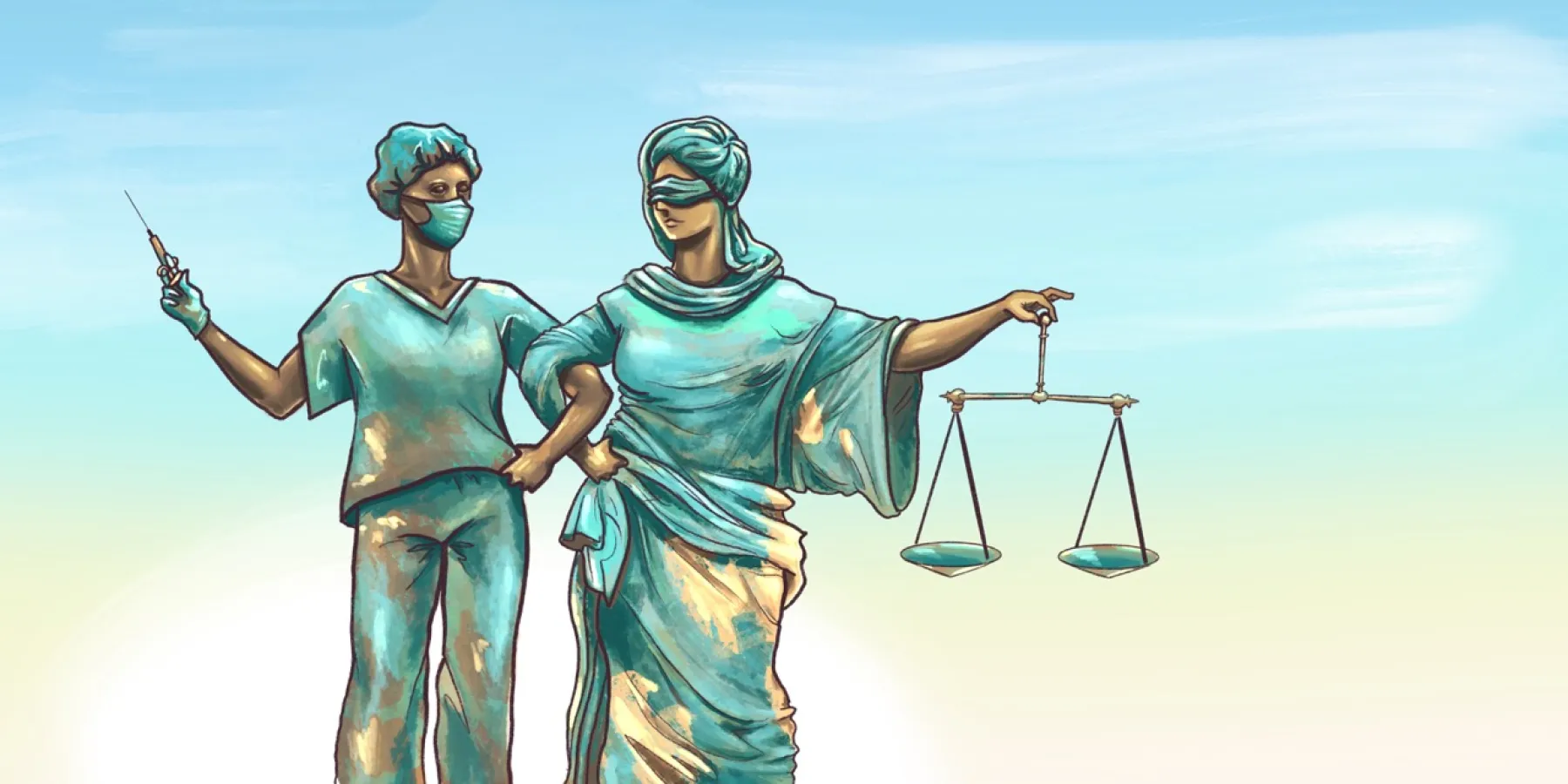Medical legal partnerships (MLPs) are interprofessional collaborations between medical and legal professionals designed with the goal of identifying patients’ health-harming legal and social needs. The pressing need for such collaborative endeavors is highlighted by the broader pattern of health status in the United States. According to some estimates, access to health care services accounts for 10% to 20% of modifiable health outcomes.1 As is now well-known, health status is influenced by broader social and economic factors—the so-called structural determinants of health (SDoH)—apart from individual behavioral or genetic risk factors. Indeed, physicians now increasingly insist upon the social nature of disease, such that those seeking to systematically understand the drivers of poor health are expected to account for the fact that “disease is always generated, experienced, defined, and ameliorated within a social world.”2 Of course, SDoH matter because they adversely impact not only our health, but also genuine human flourishing in a variety of ways.3 As Michael Marmot has written: “so intimate is the connection between our set of social arrangements and health that we can use the degree of health inequalities to tell us about social progress in meeting basic human needs.”4 While this close connection between health and human flourishing is now widely understood, an important tension remains: how to balance health care provision with prevention and with broader goals of social justice.5
Similar questions have long-occupied legal academics and practitioners. As a general proposition, the law has often shaped our understanding of what fundamental forms of social support we may expect from one another—particularly with regard to our health.6,7,8 As legal scholars have argued, the law has been a crucial determinant of health in a variety of circumstances and has often been the setting in which health-promoting social reforms have been made.9 And, as Lawrence Gostin and Lindsay Wiley demonstrate in their landmark contribution, Public Health Law: Power, Duty, Restraint, many of the significant public health interventions in the 20th century—vaccinations, workplace protections, food and safety regulations, and child welfare—relied fundamentally on obligations generated by the law.10 It is in these cases that the law has been called upon to help resolve fundamental tensions between population health and well-being, on one hand, and personal liberty and other pro-social goals, on the other. As novel methodologies are brought to bear to systematically study the impact of the law on population health over time11—in particular, the role of law itself in determining health outcomes—the potential of the law to promote health will continue to be central.
Far from being just a bridge between the 2 professions of law and medicine, MLPs have been proposed as a crucial hinge by which shared concerns may be addressed constructively.12,13,14 Since at least 1993, when pediatricians and lawyers worked together at the Boston Medical Center to construct one of the first MLPs, the MLP model has been replicated across the country,15 generating significant interest and attention for its potential to address SDoH. However, the unique ability of MLPs to identify and address many health-harming social and legal needs means that the MLP model has—often for good reason—come to encompass an increasingly diverse set of interventions.16
Contributions to this issue seek to answer several fundamental questions that must be addressed if MLPs are to gain a broader foothold in health care delivery. First, there are questions about value—what fundamental normative goals and priorities are MLPs best suited to fulfill? Next, there are questions about scope—can we expand the scope of services and activities MLPs are engaged in apart from the well-known I-HELPTM (income and insurance, housing and utilities, education and employment, legal status, personal and family stability) model?16 Relatedly, are there particular domains in which MLPs have been uniquely demonstrated to be effective? Lastly, there are questions about evidence—what kinds of evidence are necessary to evaluate the efficacy of various MLP programs? While these questions are by no means exhaustive of the many issues in which the current theme issue intervenes, the issue helps to put forward a diverse set of perspectives on these questions and seeks to set the agenda for MLP research and practice going forward.
References
-
Magnan S. Social determinants of health 101 for health care: five plus five. National Academy of Medicine. October 9, 2017. Accessed October 5, 2023. https://nam.edu/social-determinants-of-health-101-for-health-care-five-plus-five/
- Jones DS, Podolsky SH, Greene JA. The burden of disease and the changing task of medicine. N Engl J Med. 2012;366(25):2333-2338.
- Wilson J. Not so special after all? Daniels and the social determinants of health. J Med Ethics. 2009;35(1):3-6.
-
Marmot M. Foreword. In: Venkatapuram S. Health Justice: An Argument from the Capabilities Approach. Wiley; 2011:ix-x.
-
Glied S, D’Aunno T. Health systems and social services—a bridge too far? JAMA Health Forum. 2023;4(8):e233445.
-
National Federation of Independent Business v Sebelius, 567 US 519 (2012).
-
Graham v Richardson, 403 US 365 (1971).
- Fuse Brown EC, Lawrence MB, McCuskey EY, Wiley LF. Social solidarity in health care, American-style. J Law Med Ethics. 2020;48(3):411-428.
- Benfer EA. Health justice: a framework (and call to action) for the elimination of health inequity and social injustice. Am Univ Law Rev. 2015;65(2):275-351.
-
Gostin LO, Wiley LF. Public Health Law: Power, Duty, Restraint. 3rd ed. University of California Press; 2016.
-
Wagenaar AC, Pacula RL, Burris S, eds. Legal Epidemiology: Theory and Methods. 2nd ed. Wiley; 2023.
- Healton EB, Treanor WM, DeGioia JJ, Girard VW. Training future health justice leaders—a role for medical-legal partnerships. N Engl J Med. 2021;384(20):1879-1881.
- Zuckerman B, Sandel M, Lawton E, Morton S. Medical-legal partnerships: transforming health care. Lancet. 2008;372(9650):1615-1617.
- Teitelbaum J, Lawton E. The roots and branches of the medical-legal partnership approach to health: from collegiality to civil rights to health equity. Yale J Health Policy Law Ethics. 2017;17(2):343-377.
-
Lawton E. A history of the medical-legal partnership movement. Community Health Forum. 2014;(Fall/Winter):12-13. Accessed March 6, 2024. https://medical-legalpartnership.org/wp-content/uploads/2015/01/NACHC-Magazine-A-History-of-the-Medical-Legal-Partnership-Movement.pdf
- Regenstein M, Trott J, Williamson A, Theiss J. Addressing social determinants of health through medical-legal partnerships. Health Aff (Millwood). 2018;37(3):378-385.




